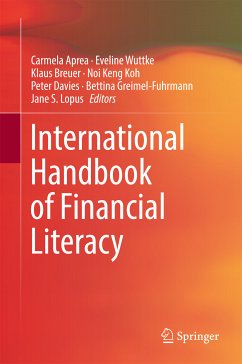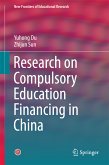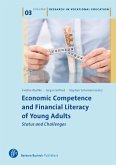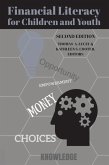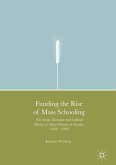International Handbook of Financial Literacy (eBook, PDF)
Redaktion: Aprea, Carmela; Lopus, Jane S.; Greimel-Fuhrmann, Bettina; Davies, Peter; Koh, Noi Keng; Breuer, Klaus; Wuttke, Eveline


Alle Infos zum eBook verschenken

International Handbook of Financial Literacy (eBook, PDF)
Redaktion: Aprea, Carmela; Lopus, Jane S.; Greimel-Fuhrmann, Bettina; Davies, Peter; Koh, Noi Keng; Breuer, Klaus; Wuttke, Eveline
- Format: PDF
- Merkliste
- Auf die Merkliste
- Bewerten Bewerten
- Teilen
- Produkt teilen
- Produkterinnerung
- Produkterinnerung

Hier können Sie sich einloggen

Bitte loggen Sie sich zunächst in Ihr Kundenkonto ein oder registrieren Sie sich bei bücher.de, um das eBook-Abo tolino select nutzen zu können.
This Handbook presents in-depth research conducted on a myriad of issues within the field of financial literacy. Split into six sections, it starts by presenting prevalent conceptions of financial literacy before covering financial literacy in the policy context, the state and development of financial literacy within different countries, issues of assessment and evaluation of financial literacy, approaches to teaching financial literacy, and teacher training and teacher education in financial literacy. In doing so, it provides precise definitions of the construct of financial literacy and…mehr
- Geräte: PC
- ohne Kopierschutz
- eBook Hilfe
- Größe: 10.76MB
![Research on Compulsory Education Financing in China (eBook, PDF) Research on Compulsory Education Financing in China (eBook, PDF)]() Yuhong DuResearch on Compulsory Education Financing in China (eBook, PDF)40,95 €
Yuhong DuResearch on Compulsory Education Financing in China (eBook, PDF)40,95 €![Does Education Have a Future? (eBook, PDF) Does Education Have a Future? (eBook, PDF)]() Jarl BengtssonDoes Education Have a Future? (eBook, PDF)40,95 €
Jarl BengtssonDoes Education Have a Future? (eBook, PDF)40,95 €- -69%11
![The Economic Gulag (eBook, PDF) The Economic Gulag (eBook, PDF)]() Robert BahliedaThe Economic Gulag (eBook, PDF)42,95 €
Robert BahliedaThe Economic Gulag (eBook, PDF)42,95 € ![Economic Competence and Financial Literacy of Young Adults (eBook, PDF) Economic Competence and Financial Literacy of Young Adults (eBook, PDF)]() Economic Competence and Financial Literacy of Young Adults (eBook, PDF)0,00 €
Economic Competence and Financial Literacy of Young Adults (eBook, PDF)0,00 €- -17%11
![Financial Literacy for Children and Youth, Second Edition (eBook, PDF) Financial Literacy for Children and Youth, Second Edition (eBook, PDF)]() Financial Literacy for Children and Youth, Second Edition (eBook, PDF)47,95 €
Financial Literacy for Children and Youth, Second Edition (eBook, PDF)47,95 € ![Funding the Rise of Mass Schooling (eBook, PDF) Funding the Rise of Mass Schooling (eBook, PDF)]() Johannes WestbergFunding the Rise of Mass Schooling (eBook, PDF)40,95 €
Johannes WestbergFunding the Rise of Mass Schooling (eBook, PDF)40,95 €![Moving Abroad (eBook, PDF) Moving Abroad (eBook, PDF)]() Moving Abroad (eBook, PDF)113,95 €
Moving Abroad (eBook, PDF)113,95 €-
-
-
Dieser Download kann aus rechtlichen Gründen nur mit Rechnungsadresse in A, B, BG, CY, CZ, D, DK, EW, E, FIN, F, GR, HR, H, IRL, I, LT, L, LR, M, NL, PL, P, R, S, SLO, SK ausgeliefert werden.
- Produktdetails
- Verlag: Springer Nature Singapore
- Seitenzahl: 713
- Erscheinungstermin: 24. März 2016
- Englisch
- ISBN-13: 9789811003608
- Artikelnr.: 44883862
- Verlag: Springer Nature Singapore
- Seitenzahl: 713
- Erscheinungstermin: 24. März 2016
- Englisch
- ISBN-13: 9789811003608
- Artikelnr.: 44883862
- Herstellerkennzeichnung Die Herstellerinformationen sind derzeit nicht verfügbar.
